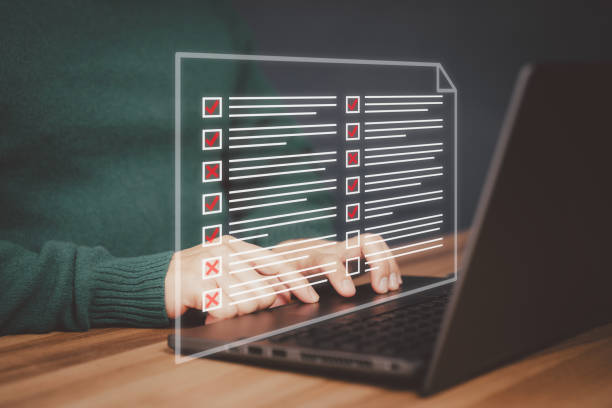Basic Concept of Internal SEO and Its Importance

Internal SEO or On-Page SEO, refers to a set of actions and techniques applied within your website and on its web pages to improve its ranking in #Search_Engines results.
This optimization approach helps search engines better understand your content and evaluate its value for users.
In fact, the main goal of internal SEO is to build pages that are both engaging and useful for users and understandable for Google’s algorithms.
This comprehensive guide goes beyond basic principles and helps you achieve the best performance in this area with a specialized perspective.
Without strong internal SEO, even the best content might get lost among the vast amount of information available on the web.
Therefore, mastering this field is educationally vital for any website or online business looking to increase visibility and attract organic traffic.
This includes optimizing various elements such as titles, meta descriptions, URL structure, content, images, and internal links, each playing a key role in improving your site’s ranking.
A deep understanding of these concepts and their correct implementation can make a big difference in your online success.
This explanatory and fundamental section is the cornerstone of all your subsequent activities in the path of search engine optimization.
Tired of losing business opportunities due to not having a professional corporate website?
Rasaweb helps you with professional corporate website design:
✅ Build a powerful and reliable brand image
✅ Convert website visitors into loyal customers
⚡ Get a free consultation now!
Effective Keyword Research for Internal Optimization

Keyword research is the backbone of any successful internal SEO strategy.
Choosing the right keywords helps you create content that precisely matches the needs and questions of your audience.
This educational and critical step involves identifying phrases that your target users enter into search engines to find products, services, or information similar to what you offer.
Using tools like Google Keyword Planner, SEMrush, Ahrefs, and Keyword Tool can help you find keywords with high search volume and appropriate competition.
It is important to identify not only main keywords but also Long-Tail Keywords, as these phrases are more specific and usually have higher conversion rates.
For example, instead of “SEO,” use “Comprehensive internal SEO training for beginners.”
Question-provoking content relevant to the selected keywords not only shows search engines what your page is about but also improves user experience.
A specialized and accurate keyword research strategy ensures that your internal optimization efforts are directed toward the right goal and differentiate you from your competitors.
Beyond simple searching, you should also pay attention to the user’s intent behind each keyword to provide content that truly helps them.
Content and URL Structure Optimization for Internal SEO
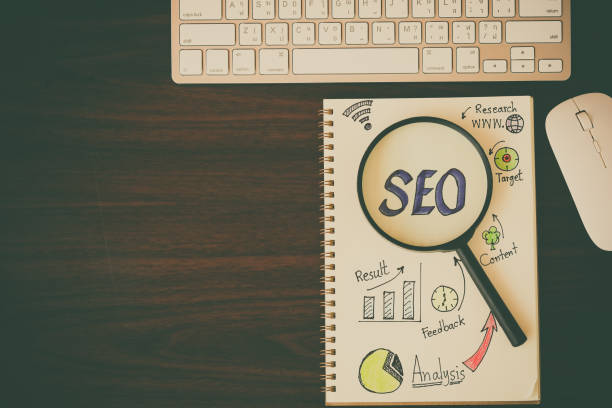
Content is king, and this principle holds truer than ever in internal SEO.
Content optimization involves the smart use of keywords in headings (H1, H2, H3), meta descriptions, and the main text of the page.
It is important that keywords are naturally and sparingly included in the content to maintain readability and text value.
URL structure also plays an important role in internal SEO.
A readable, short URL containing the target keyword is useful for both users and search engines.
For example, instead of “www.example.com/?p=123,” use “www.example.com/internal-seo-training.”
This section guides you on how to significantly increase your page rankings by combining high-quality content and an optimized URL structure.
Using short paragraphs, bullet points, and lists helps improve readability, which in turn enhances user experience and sends positive signals to search engines.
Table 1: Key Elements of Content Optimization
| Internal SEO Element | Description | Optimization Tips |
|---|---|---|
| Page Title (Title Tag) | The first thing seen in search results. | Includes the main keyword, short and appealing (less than 60 characters). |
| Meta Description | A short summary of the page content. | Includes keyword, encourages user to click (150-160 characters). |
| Headings (H1-H6) | Structures content and indicates hierarchy. | H1 should be used only once, H2 and H3 for subheadings with relevant keywords. |
| Body Content | The main and valuable content of the page. | High-quality, in-depth, and comprehensive content, natural use of keywords, high readability. |
Producing specialized and analytical content that truly answers user questions not only helps with internal SEO but also increases your site’s credibility.
Technical Aspects of Internal SEO: From Canonical to Schema Markup
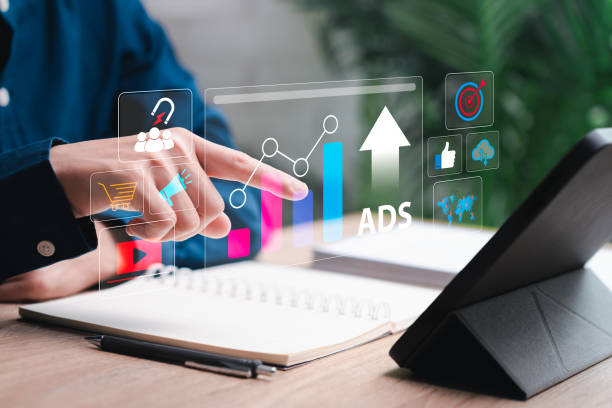
Beyond content and keywords, internal SEO also includes important technical aspects that affect how your site is understood and ranked by search engines.
One such aspect is the correct use of Canonical Tag.
This tag tells search engines which version of a page (if similar or duplicate versions exist) is the original, which prevents duplicate content issues.
Schema Markup or structured data are also powerful internal SEO tools that help search engines better understand your page content and display specific information such as star ratings, product prices, or event details directly in search results (Rich Snippets).
This not only increases your site’s visibility but also improves the click-through rate (CTR).
Page loading speed optimization is also an important ranking factor.
Users and search engines both prefer fast pages.
Using tools like Google PageSpeed Insights can help you identify and fix speed-related issues.
Responsive Design and mobile-friendliness of the site are also a necessity for internal SEO today, as a large portion of searches are done through mobile devices.
These aspects may not be directly related to content, but they have a significant impact on user experience and, consequently, your site’s ranking.
This is an explanatory and specialized section that gives you a deeper insight into the technical tools of internal optimization.
Ensuring the technical health of your website is a prerequisite for any successful internal SEO strategy, and neglecting it can harm your site’s performance.
Do you dream of a thriving online store but don’t know where to start?
Rasaweb is your comprehensive e-commerce website design solution.
✅ Attractive and user-friendly design
✅ Increased sales and revenue⚡ Get a free consultation
Image Optimization for Enhanced Internal SEO Performance
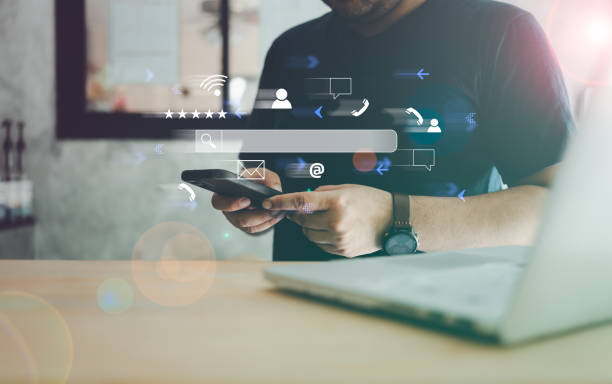
Images are an integral part of modern websites and contribute to visual appeal and message delivery.
However, if not properly optimized, they can become a factor for slow site speed and reduced internal SEO ranking instead of helping.
Image optimization involves several key steps.
First, image compression without noticeable quality reduction.
Tools like TinyPNG or Compressor.io can significantly reduce image file sizes.
Second, using descriptive file names related to keywords.
Instead of “IMG_1234.jpg,” use “internal-seo-training-2023.jpg.”
Third and perhaps most importantly, Alternative text (Alt Text).
Alt Text is a brief description of the image content that is displayed if the image fails to load and is very important for visually impaired users (who use Screen Readers).
Also, this text helps search engines understand the image content and rank it in image search.
Adding relevant keywords in Alt Text, without overdoing it, helps improve internal SEO.
Also, ensuring that image dimensions are proportional to the available space on your page prevents loading images that are much larger than needed, which in turn helps site speed.
An educational guide for image optimization can include steps for choosing the right format (like WebP for web), using a CDN (Content Delivery Network) for faster image loading, and lazy loading images.
These specialized techniques, although they may seem minor, collectively have a significant impact on overall internal SEO performance and user experience.
Internal Link Building Strategy for Page Authority Enhancement
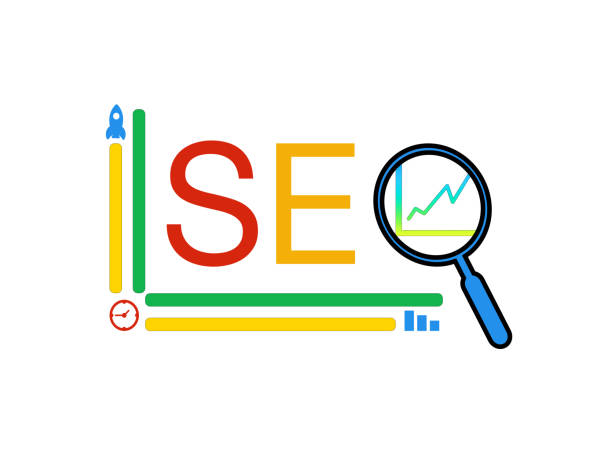
Internal Linking is one of your most powerful tools in your internal SEO strategy that is often overlooked.
Internal links are links that point from one page on your site to another page on the same site.
These links perform several critical tasks:
- They help search engines discover and index your site’s pages (Crawlability).
- They distribute SEO value (Link Equity) across your site, giving more authority to important pages.
- They improve user experience and help users find more relevant information on your site, leading to increased dwell time and reduced bounce rate.
A guiding strategy in internal linking includes linking from high-authority pages to new pages or pages whose ranking you want to improve.
Also, using descriptive and keyword-rich anchor texts for links is very important.
For example, instead of “Click here,” use “learn more about the importance of internal SEO.”
This is an analytical approach that allows you to carefully control the flow of SEO power on your site.
A hierarchical site structure, such as a central hub (e.g., a category page) that links to related articles, can be very useful in this regard.
This approach adds depth to your internal optimization and ensures that no important page remains hidden from search engines.
User Experience (UX) and Its Role in Internal SEO Success

User Experience (UX) is no longer a secondary factor, but has increasingly become a critical factor in internal SEO.
Google consistently emphasizes the importance of providing an excellent user experience.
User-friendly pages not only make users stay longer on your site and interact more but also send positive signals to search engines.
Factors such as page loading speed, design responsiveness (compatibility with mobile phones and tablets), content readability, and easy site navigation all affect UX and directly or indirectly impact your SEO ranking.
A site with poor UX will have a high bounce rate, meaning users quickly leave your site, which is a negative signal for Google.
Optimizing user experience for internal SEO includes designing an attractive user interface (UI), ensuring there are no 404 errors or broken links, and providing a simple process to find desired information.
This explanatory and analytical section demonstrates the importance of the overlap between UX and internal SEO.
Ultimately, a site that users like and find easy to use is also rewarded by search engines.
Table 2: Key User Experience Factors and Their Impact on SEO
| UX Factor | Impact on Internal SEO | Improvement Tips |
|---|---|---|
| Page Loading Speed | Increases user satisfaction and reduces bounce rate. Direct ranking factor. |
Image optimization, reducing server requests, using CDN, file compression. |
| Mobile-Friendliness | Essential for ranking in mobile search (Mobile-First Indexing). | Responsive design, using readable fonts, sufficient space for clicks. |
| Content Readability | Increases user dwell time, reduces bounce rate. | Short paragraphs, headings, bullet points, sufficient white space. |
| Site Navigation | Helps search engines crawl and users find information. | Clear menus, logical structure, use of Breadcrumbs. |
A site with a good user experience not only keeps visitors satisfied but also significantly improves your internal SEO performance.
Monitoring and Analyzing Internal SEO Performance with Tools
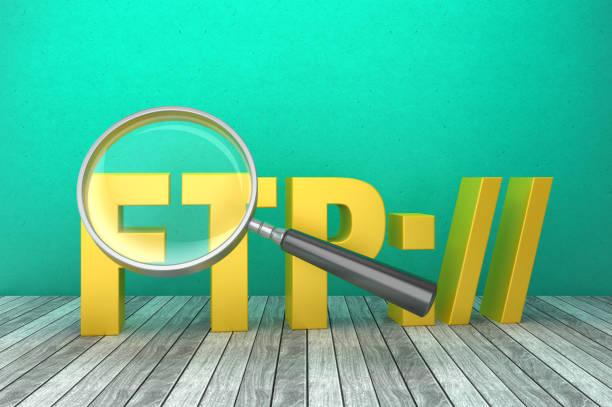
After implementing internal SEO strategies, the next and crucial step is to monitor and analyze their performance.
Without measurement, you cannot know which actions have been effective and which need further optimization.
Tools like Google Search Console and Google Analytics provide valuable information.
Google Search Console helps you monitor your site’s search performance, identify issues such as crawl errors, indexing problems, and keyword traffic.
Google Analytics also provides comprehensive data on user behavior on your site, including bounce rate, time spent on page, and navigation paths.
For a deeper analytical approach, you can also use paid tools like SEMrush or Ahrefs, which offer more advanced features for monitoring keywords, competitor rankings, and link-building opportunities.
Regularly reviewing these reports allows you to identify the strengths and weaknesses of your internal SEO and adjust your strategies based on real data.
This educational and continuous process is the key to sustained success in the dynamic world of SEO.
News-related analysis of new Google algorithms and adapting strategies to them is also part of this process.
Internal SEO optimization is not a one-time project, but a continuous effort that requires ongoing monitoring and adjustment to achieve the best results.
Are your e-commerce site visitors leaving before buying? Don’t worry anymore! With Rasaweb’s professional e-commerce website design services, solve the problem of converting visitors into customers forever!
✅ Significant increase in conversion rate and sales
✅ Unrivaled and attractive user experience
⚡ Contact us now for a free consultation!
Common Mistakes in Internal SEO and How to Avoid Them

Despite the high importance of internal SEO, many webmasters and content creators make mistakes that can render their efforts ineffective.
Understanding these mistakes and avoiding them is crucial for success.
One of the most common mistakes is Keyword Stuffing.
Excessive repetition of a keyword not only harms content readability but can also be recognized as a spamming act by search engines and lead to penalties.
Your content should be natural and written for the user, not just for search engines.
Another mistake is ignoring mobile optimization.
Given the increasing use of mobile devices for searching, not having a responsive site is a glaring mistake in internal SEO.
Also, lack of Alt Text optimization for images and using generic file names misses a big opportunity to get traffic from image search.
Broken links and 404 errors also harm user experience and internal SEO.
Regularly checking the site for and fixing these errors is essential.
Ignoring the importance of page loading speed can also lead to high bounce rates and lower rankings.
Finally, not producing question-provoking content and high-quality content, and merely focusing on keywords, will not attract an audience.
A guiding approach is to always evaluate your content from the user’s perspective.
This analytical section helps you avoid falling into the trap of these common mistakes in internal optimization and pave your way to success.
The Future of Internal SEO: AI, E-A-T, and Continuous Optimization
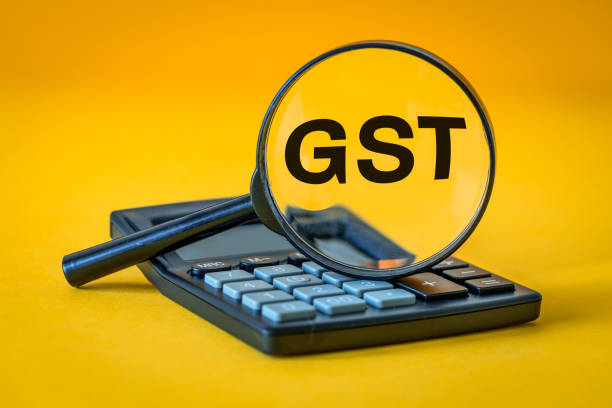
The world of internal SEO is rapidly evolving, and with the emergence of new technologies, its future will also undergo significant changes.
Artificial Intelligence (AI) and machine learning play an increasing role in Google’s algorithms and influence how content is understood and ranked.
This means that your content should not only be optimized for specific keywords but also be comprehensive and relevant enough to meet more complex user needs, even if their question is not directly present in the text.
The concept of E-A-T (Expertise, Authoritativeness, Trustworthiness) has become more important.
Google seeks to rank content higher from sites written by credible experts and that are trustworthy.
Therefore, building a strong personal or corporate brand, increasing credibility in your field, and earning user trust through high-quality content and reliable references are essential for future internal SEO.
This is a specialized aspect that requires a long-term and strategic approach.
Continuous optimization is also a key principle.
Internal SEO is not a one-time project, but an ongoing process that requires content updates, performance monitoring, and adaptation to algorithm changes.
With the rise of voice and image search, and the increasing importance of entertaining content and interactivity, internal SEO strategies must also evolve.
This informative and predictive section helps you prepare for the future of internal optimization.
Frequently Asked Questions
| Question | Answer |
|---|---|
| What is Internal SEO (On-page SEO)? | Internal SEO refers to a set of actions performed within your website to improve its ranking in search engine results. This includes optimizing content, site structure, and HTML code. |
| Why is internal SEO important? | Internal SEO helps search engines understand your page’s content and determine whether your content is relevant to searchers. It is the foundation of any successful SEO strategy. |
| What are the key elements of internal SEO? | Page title (Title Tag), meta description, keyword usage, image optimization, heading structure (H1, H2, …), internal linking, and content quality are key elements. |
| How to optimize the page title (Title Tag)? | The page title should include the main keyword, be attractive and encouraging to click, and its length should be between 50 to 60 characters (or appropriate pixels) to be fully displayed in search results. |
| What role does the meta description play in internal SEO? | The meta description is a summary of the page content displayed below the title in search results. Although it does not directly affect ranking, it helps SEO by increasing the click-through rate (CTR). |
| What is the importance of using heading structure (H1, H2, H3) in internal SEO? | Headings structure the page content and make it easier to read. H1 is usually the main title of the page and should include the keyword. H2 and H3 are used to organize subsections and help search engines understand the content hierarchy. |
| How to effectively use keywords in content? | Keywords should be used naturally and logically throughout the content, including the introduction, body, and conclusion. Avoid keyword stuffing. |
| What steps are involved in optimizing images for internal SEO? | It involves compressing images to reduce size, using descriptive file names, adding appropriate alternative text (Alt Text), and optimizing the image title and description. Alt Text is crucial for accessibility and helping search engines understand image content. |
| What is internal linking and what are its benefits? | Internal linking means creating links from one page on your website to another page on the same website. This helps users easily navigate your site, distributes page authority across the site, and helps search engines better understand your site’s structure. |
| What is the importance of content quality in internal SEO? | High-quality, accurate, comprehensive, and valuable content for users is the cornerstone of internal SEO. Search engines prefer content that meets users’ needs. High-quality content leads to increased user dwell time and reduced bounce rate, which are positive SEO signals. |
And other services of Rasaweb Advertising Agency in the field of advertising
Smart SEO: Transform customer behavior analysis with precise audience targeting.
Smart Digital Advertising: An innovative platform for improving user engagement by optimizing key pages.
Smart SEO: A specialized service for improving SEO ranking growth based on marketing automation.
Smart Marketing Automation: A professional solution for analyzing customer behavior with a focus on custom programming.
Smart Sales Automation: An innovative service for increasing website traffic through marketing automation.
And over a hundred other services in the field of internet advertising, advertising consultation, and organizational solutions
Internet Advertising | Advertising Strategy | Advertorial
Resources
What is Internal SEO? A Complete Guide to Internal Site SEO
What is Internal SEO and How Is It Done?
Internal SEO and Its Important Tips for Improving Site Ranking
Comprehensive Guide to Website Optimization for Search Engines
? To elevate your business in the digital space, Rasaweb Afarin Digital Marketing Agency, specializing in secure website design and SEO, is always with you to ensure a powerful and lasting presence in the online world.
📍 Tehran, Mirdamad Street, next to Bank Markazi, Southern Kazeroun Alley, Ramin Alley, No. 6


